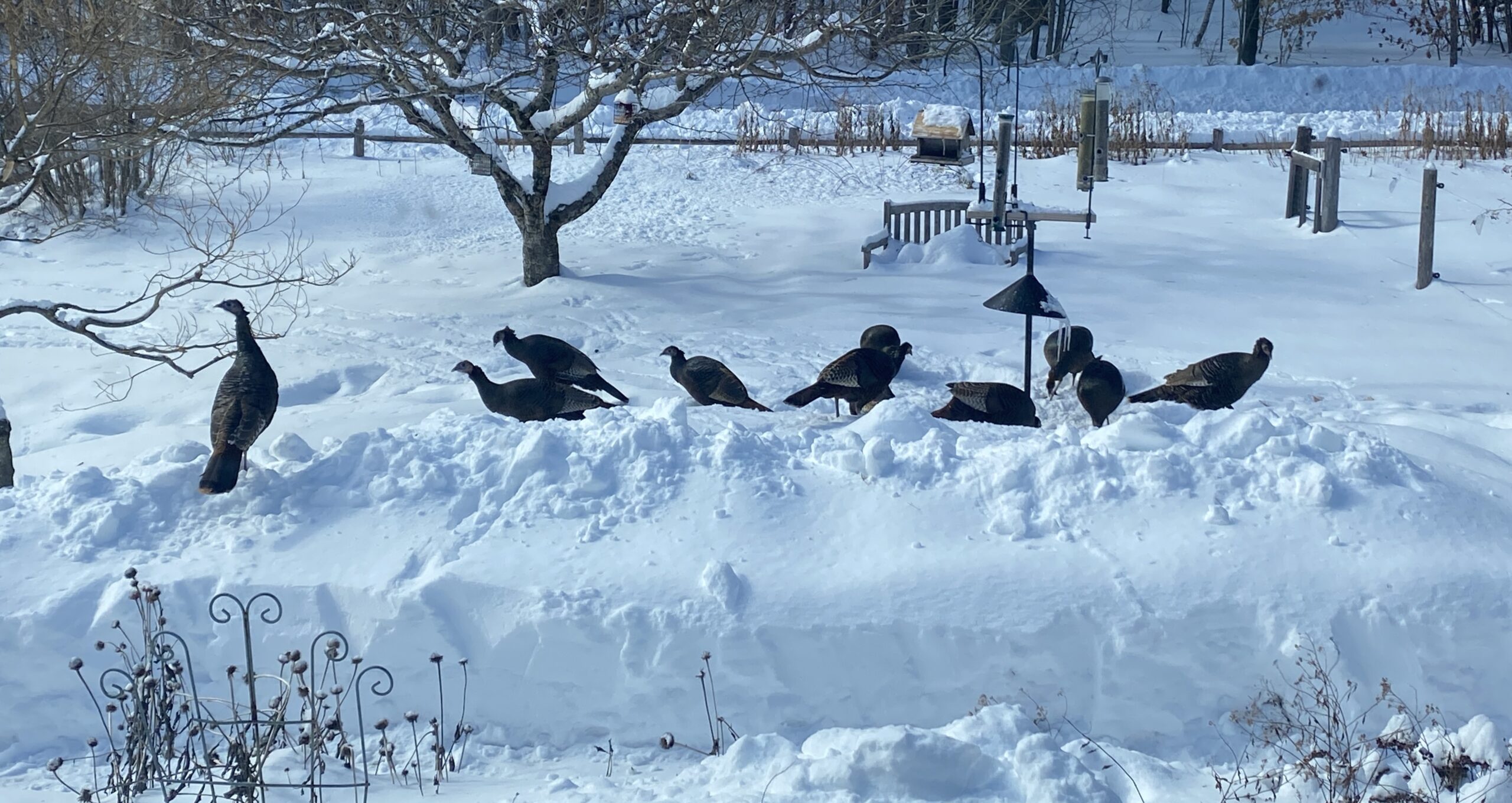Saturday, February 8 and Sunday, February 9, 2025
This past weekend was the annual NH Audubon Backyard Bird Survey. Each year I sit at our dining room window and watch and record birding sightings, in our case, in the Front Yard. Saturday was mostly cloudy, no wind, and temperatures starting at 15F then rising to about 34F by late afternoon. Snow fell overnight and continued til about noon, by then we had about 10 inches of new powder.

New snowfall
By the end of Sunday, I tallied 19 species of birds. Most of the birds visited the two suet feeders hanging in the crabapple tree and/or the four sunflower seed feeders. Some of the highlights: 11 mourning doves, a pair of red-bellied woodpeckers, 7 eastern bluebirds, 4 blue jays, 1 Carolina wren, 12 robins, and 1 tree sparrow.
The robins were focused on the shriveled crabapples that remain on the tree. Bluebirds, starlings, blue jays, and all the woodpeckers (red-bellied, downy, and hairy) took turns at the suet. Nuthatches, chickadees, and titmice darted between suet, sunflowers, and the safety of the nearby trees. Juncos and finches focused on the sunflower seeds — taking from the feeders as well as the ground. The flock of mourning doves waddled around on the ground, staying only a few minutes.
The blue jays and starlings took charge of the feeders when they wanted. Cardinals sat quietly in the trees for long periods. The downy woodpeckers moved about the crabapple tree carefully and stealthily before clinging to the feeder.
Six gray squirrels visited the yard on Saturday, but only one on Sunday. The snow kept them tucked into their winter nests. One squirrel spent some time in the crabapple munching on a particularly small, dark and shrunken crabapple, bypassing all the others that were larger and lighter in color. One or more cottontail rabbits had left a scattering of pellets among the perennials below the front window. After sundown on Sunday I noticed fresh pellets and tracks beneath the feeders. I wonder if they occasionally eat sunflower seeds or just found it to be a safe spot to sit for a bit.


